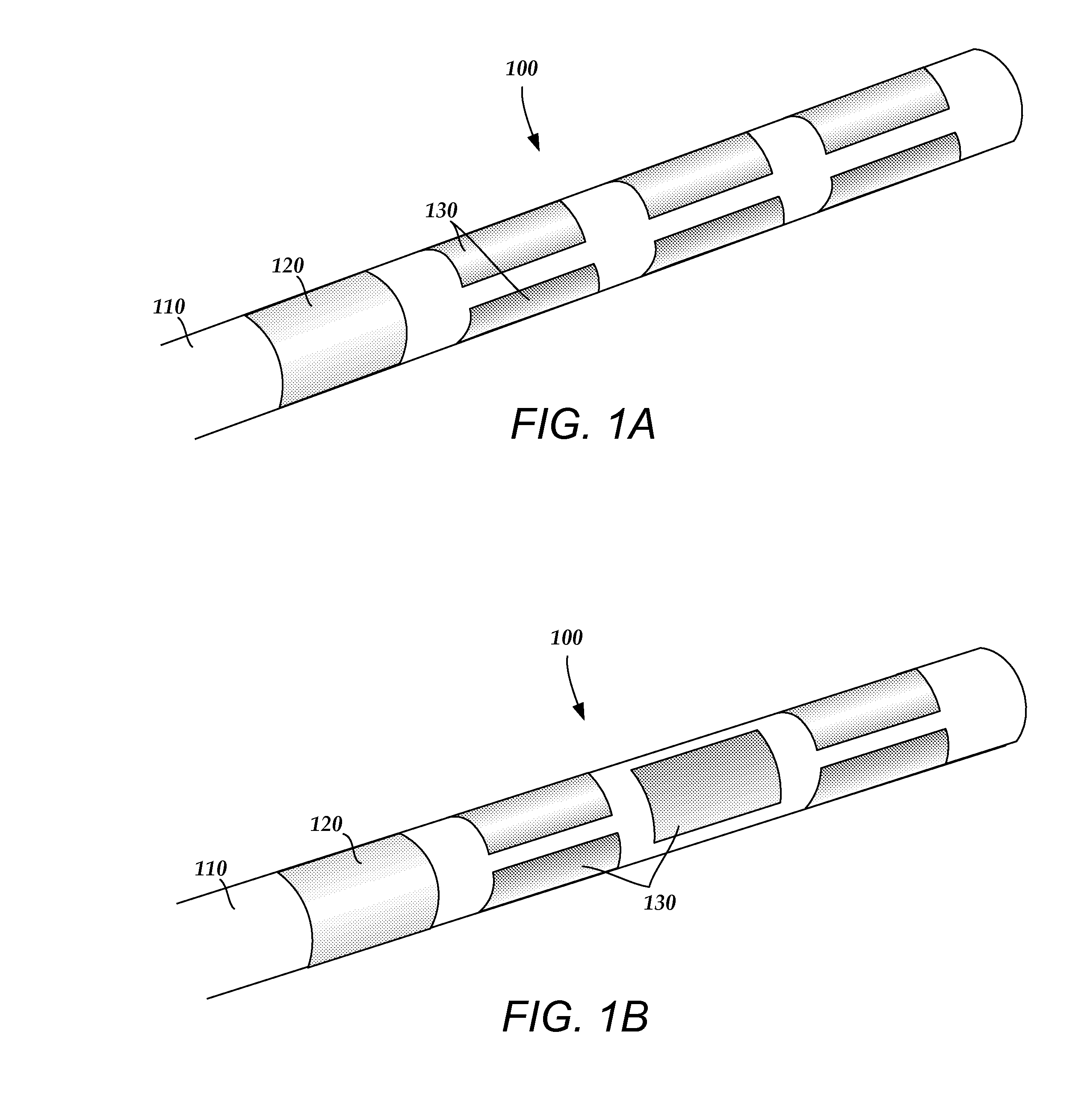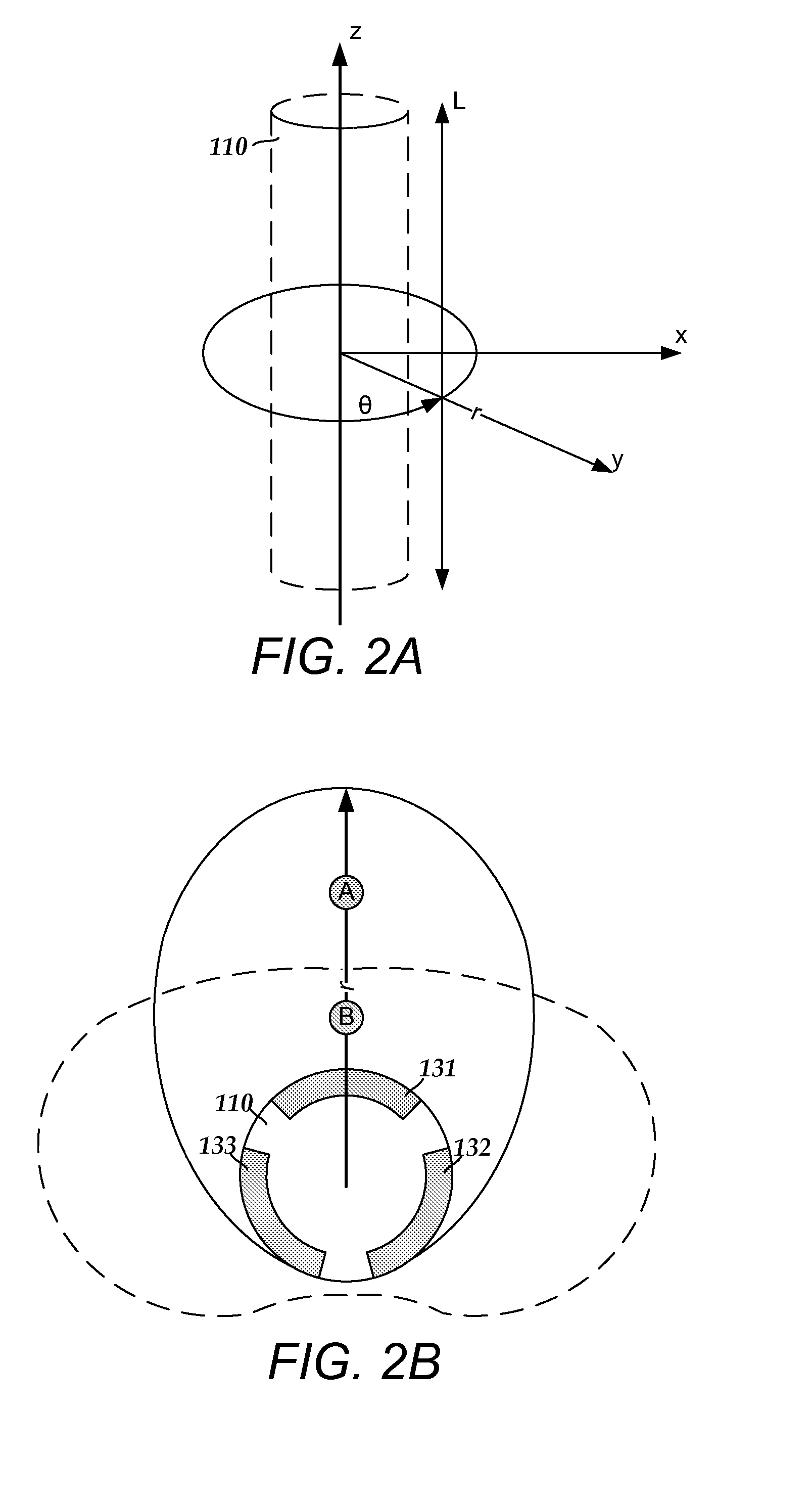Methods, systems, and devices for deep brain stimulation using helical movement of the centroid of stimulation
a technology of deep brain stimulation and centroid movement, which is applied in the field of deep brain stimulation using helical movement of the centroid of stimulation, can solve the problems of increased time for the proper therapeutic effect to be obtained, unwanted stimulation of neighboring neural tissue, and undesired side effects
- Summary
- Abstract
- Description
- Claims
- Application Information
AI Technical Summary
Problems solved by technology
Method used
Image
Examples
second embodiment
[0070]FIG. 4C is a schematic perspective view of current steering, similar to the current steering of FIG. 4B. The current steering used in FIG. 4C allows the centroid of stimulation, S, to travel in a spiral-like path from the proximal end of the lead 100 to the distal end of the lead 100.
third embodiment
[0071]It will be understood that the centroid of stimulation, S, is not limited to movement from one end of the lead 100 to the other end. FIG. 4D provides a schematic perspective view of current steering. As seen in FIG. 4D, the centroid of stimulation, S, may be programmed to begin stimulation at any point along the lead 100 (e.g. at an intermediate longitudinal position along the length of the lead 100) and may end at any point on the lead. From this intermediate position, the centroid of stimulation, S, may be shifted either to the distal end or the proximal end of the lead 100 or both. Furthermore, the programming unit 370 may be programmed such that the centroid of stimulation begins at one position along the length of the lead 100, shifts toward the proximal end of the lead, and shifts back toward the distal end of the lead 100. The centroid of stimulation may thus be repositioned to any point along the length and about the circumference of the lead as desired. It will be und...
PUM
 Login to View More
Login to View More Abstract
Description
Claims
Application Information
 Login to View More
Login to View More - R&D
- Intellectual Property
- Life Sciences
- Materials
- Tech Scout
- Unparalleled Data Quality
- Higher Quality Content
- 60% Fewer Hallucinations
Browse by: Latest US Patents, China's latest patents, Technical Efficacy Thesaurus, Application Domain, Technology Topic, Popular Technical Reports.
© 2025 PatSnap. All rights reserved.Legal|Privacy policy|Modern Slavery Act Transparency Statement|Sitemap|About US| Contact US: help@patsnap.com



